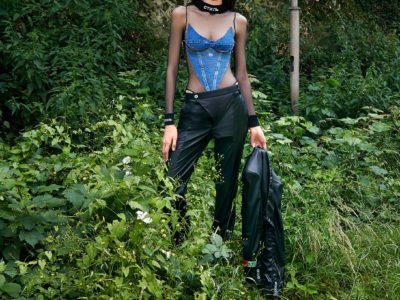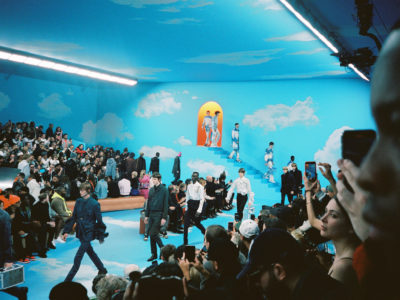Testing the Boundaries of Art and Fashion
Testing the Boundaries of Art and Fashion
WORDS BY: ARIELA KOZIN | PHOTOS COURTESY OF MOLLY MAE WHAWELL



So many of us found fashion in our first underage trip to a bar or in the pages of mainstream fashion magazines, but not Alice Pinchbeck. Instead, she found it in books about modern history and fine art remembering, “Rather than growing up learning about designers, I learned about artists like Hockney and Doig. When I arrived in Glasgow, I was surrounded by people who’d come from urban places surrounded by diversity. I felt so naïve, but it made me hungry to learn and explore the subcultures of fashion.”
Alice Pinchbeck’s only beginning in fashion design, but her pieces are what so many designers never achieve—fearless garments that are distinctly her own, with a subtle hint of naivety. Made up of abstract shapes, lush fabrics, hanging asymmetric drapes, and gaping openings, there’s something about her work that is far beyond her years. At just 22, Alice clearly stands out in a world where discovering millions of artists is just a click away. Like any good secret, the key to her unique perspective took a little digging to unveil, but we found it in her upbringing. It was a childhood that was far, far away from the churn-in-churn-out fashion world.
Alice was born and raised in Lincolnshire’s quaint town of Heckington (population 4,000), almost entirely disconnected. Even years later while getting her technical training, Alice created with art in mind instead of fads she saw around her. Her clothing is inspired through research of Dadaist artists, like Oskar Schlemmer and Sophie Taueber Arp, who are known for rejecting logic and reason in exchange for nonsense and irrational shapes and cuts. “I came across this photo of performers in Oskar Schlemmer’s Bahaus Ballet. It’s a candid photo of them relaxing backstage, making small talk in these surreal costumes.”
“When I looked at Sophie’s work, I think she was more than an artist practicing in multiple disciplines—art was her reality. She blurred the line between her life and her practice. I wanted to reflect this in my collection by distorting the boundary between the model and the garments and, at a more abstract level, the boundary between fashion and art. Also like Taeuber-Arp’s costumes my collection can also reassembled—the ties crudely fasten the garments together so they can be quickly altered and reimagined.”
Now that her first collection is designed and Alice has moved to London after graduation, she is focused on letting others reinvent her narrative. Maybe even more than the first time she saw her clothes walk the runway, it excites her to see how other artists transform her garments for editorial shoots. “It’s important to pass it on so it can be evolved further, it’s so exciting to see how other people respond to your work and develop it further beyond your own vision.”
Alice hopes to put her collection in production later this year. In the meantime, you can following the designer’s journey at @alicepinchbeckstudio.
Alice’s line mixed in with photos of Oskar Schlemmer’s Bauhaus Ballet and Sophie Arp.











